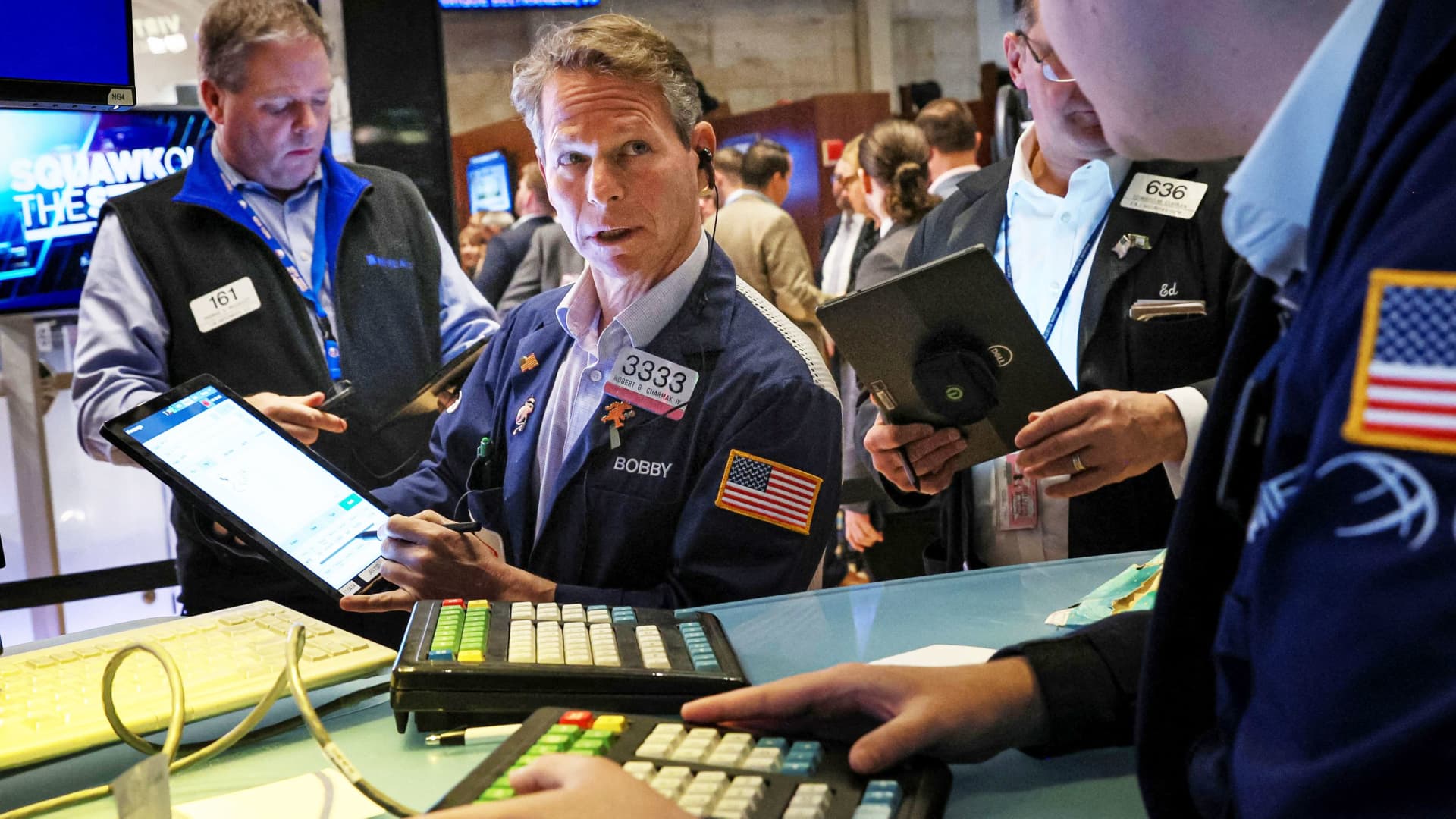
The S & P 500 may be headed for its worst yearly performance since 2008, but some stocks still outperformed this year. Recession fears increasingly weighed on the broader market index, which dropped more than 19% in 2022. That’s worse than the 9% decline in the Dow Jones Industrial Average, and better than the roughly 33% fall in the Nasdaq Composite. That means the broader market index is on pace for its fourth-worst calendar year since World War II, according to CFRA chief investment strategist Sam Stovall. The only years with bigger declines are 2008, 1974 and 2002. Still, Stovall has a more positive outlook in 2023, saying markets historically advance following a down year. The strategist has a 12-month target of 4,575 on the S & P 500, implying about a 19% gain from Thursday’s close. “Our belief is that because the Fed will stop raising rates sometime in the first quarter, investors will begin to look across the valley, as we call it, and decide to buy back into equities because the Fed will likely have engineered a — not a soft landing, but at least a mild recession — while corralling inflation,” Stovall said. “Even though the Fed has told us that they don’t really plan on cutting rates in 2023, they have admitted that they are data dependent, and since they ended up waiting too long to start raising rates because of this data dependency, I would not be surprised if they ended up lowering rates quicker than expected because of this data dependency,” he added. The breakdown Part of the difference this year among the major indexes can be explained by composition. The S & P 500 has less exposure to underperforming sectors such as technology compared to the Dow, but more so than the Nasdaq Composite. Meanwhile, the Dow is more exposed to winning sectors such as energy. In the S & P 500, communication services, consumer discretionary, information technology and real estate stocks were the worst laggards this year, down about 41%, 38%, 29% and 28%, respectively. Investors dumped riskier assets ahead of growth concerns in 2023. Typically, the worst-performing sectors in a down year outperform the following year. Stovall expects that the outlook is more positive for consumer discretionary and information technology stocks in 2023. However, he thinks that communication services will continue to face challenges next year, given continued regulatory scrutiny around the world. Meanwhile, energy stocks, which dominated the index this year, could have further upside in 2023, as the reopening in China drives demand for oil. The sector was the only one out of 11 that was higher in 2022, gaining more than 58% this year. Here are the best and worst stocks in the S & P 500. Biggest winners Occidental Petroleum was the top stock in 2022, surging more than 114% in its best year since at least 1972. Its next-best year was in 1979 when shares gained 72.2%. The stock started trading in 1964. Still, analysts have a hold rating on the stock, according to consensus estimates on FactSet. In a November note, Piper Sandler analysts downgraded the stock to neutral, saying they “see greater upside elsewhere” after the stock’s recent performance. Regardless, the $76.64 average price target on FactSet implies more than 20% upside, as of Thursday’s closing price. First Solar shares are also in the top 10 best-performing stocks in the S & P 500. Some on Wall Street expect they could continue to rise next year. Goldman Sachs recently named the solar stock one of its top picks for 2023 , saying it could continue to get a boost following the passage of the Inflation Reduction Act. “While solar equities outperformed in 2022 vs. R2K, stocks are still ~20% below early ’21 peak levels and valuations remain below pre-IRA levels,” Goldman Sachs analyst Brian Lee wrote. Other big winners include Hess , Marathon Petroleum and Exxon Mobil . Biggest decliners On the other hand, the worst performing stock this year was Generac, down about 70%, as of Thursday’s close. In November, Jefferies downgraded the stock to underperform from hold . The investment firm said the growing adoption of bidirectional charging in electric vehicles could pose a threat to the maker of backup power generators going forward. Meanwhile, Tesla was the fourth-worst performing stock this year. Shares have fallen about 65% as investors worry about weaker demand for electric vehicles going forward, as well as CEO Elon Musk’s management of Twitter. Even one of Wall Street’s biggest proponents of Tesla, Morgan Stanley analyst Adam Jonas, recently lowered his expectations for the stock , though he said the electric vehicle maker will still lead competitors in the sector. Other worst performers in the S & P 500 include Match Group , Align Technology and SVB Financial Group .






